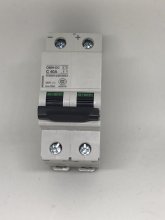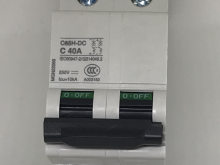You are using an out of date browser. It may not display this or other websites correctly.
You should upgrade or use an alternative browser.
You should upgrade or use an alternative browser.
Wiring polarity on DC breakers
- Thread starter mopat
- Start date
ghostwriter66
"Here - Hold my Beer"
I searched the forum for this information but could not find it, so I'd like to post this file (if that is acceptable).
It helped me and seems pretty clear and understandable.
Hopefully it may help someone else.
make sure you post this under RESOURCES ALSO
This is great I have spent so much time trying to explain this to people a picture is definitely worth a thousand wordsI searched the forum for this information but could not find it, so I'd like to post this file (if that is acceptable).
It helped me and seems pretty clear and understandable.
Hopefully it may help someone else.
Sverige
A Brit in Sweden
Thanks for posting this! I’ve been looking at this breaker I bought from amazon, trying to figure out how to connect it between my PV panels and charge controller, and with the help of your diagram I think the correct answer is as follows:
top left terminal to PV negative
top right terminal to PV positive
bottom left terminal to SCC PV input negative
bottom right terminal to SCC PV input positive
correct??

top left terminal to PV negative
top right terminal to PV positive
bottom left terminal to SCC PV input negative
bottom right terminal to SCC PV input positive
correct??

I'm not the smartest guy in the room when it comes to breakers. I already goofed up once (or twice) on buying the wrong breakers. So take this with a grain of salt...
@Sverige, I'm not convinced that the breaker in your picture is polarized. Does it actually SAY that it is polarity sensitive? I have a set of single pole breakers that are polarity sensitive and they get wired with the battery feed on the bottom and the load on the top.
I have a set of C65H-DC double pole breakers that appear to be polarity sensitive (the label is a bit vague). I have them wired with the feed (solar panel) coming in the top and the output (to the solar charge controller) going out the bottom, following the + and - labels that are on top but not on the bottom. I have thrown the breaker to test cutting off power to the solar charge controller and it worked fine - no magic smoke. Then again, maybe I just got lucky.
Check with your manufacturer's instructions. Yours may be different than the Altech in the document provided in the original post.
@Sverige, I'm not convinced that the breaker in your picture is polarized. Does it actually SAY that it is polarity sensitive? I have a set of single pole breakers that are polarity sensitive and they get wired with the battery feed on the bottom and the load on the top.
I have a set of C65H-DC double pole breakers that appear to be polarity sensitive (the label is a bit vague). I have them wired with the feed (solar panel) coming in the top and the output (to the solar charge controller) going out the bottom, following the + and - labels that are on top but not on the bottom. I have thrown the breaker to test cutting off power to the solar charge controller and it worked fine - no magic smoke. Then again, maybe I just got lucky.
Check with your manufacturer's instructions. Yours may be different than the Altech in the document provided in the original post.
Sverige
A Brit in Sweden
Thanks! C65H-DC is exactly what’s printed on the front of mine, so from what I gather, you’ve got yours wired the same way I propose to wire mine?I'm not the smartest guy in the room when it comes to breakers. I already goofed up once (or twice) on buying the wrong breakers. So take this with a grain of salt...
@Sverige, I'm not convinced that the breaker in your picture is polarized. Does it actually SAY that it is polarity sensitive? I have a set of single pole breakers that are polarity sensitive and they get wired with the battery feed on the bottom and the load on the top.
I have a set of C65H-DC double pole breakers that appear to be polarity sensitive (the label is a bit vague). I have them wired with the feed (solar panel) coming in the top and the output (to the solar charge controller) going out the bottom, following the + and - labels that are on top but not on the bottom. I have thrown the breaker to test cutting off power to the solar charge controller and it worked fine - no magic smoke. Then again, maybe I just got lucky.
Check with your manufacturer's instructions. Yours may be different than the Altech in the document provided in the original post.

Thanks! C65H-DC is exactly what’s printed on the front of mine, so from what I gather, you’ve got yours wired the same way I propose to wire mine?
View attachment 30124
Yep, in the top, out the bottom.
Can someone explain why you'd want to use a polarized circuit breaker to begin with?
Personally, I don't WANT to use a polarized breaker. Those are the ones that I can find. Maybe all DC breakers are that way?
Okay.. I just wasn't sure.. I'll actually have to go check mine.. but the ones I've always used are the ones sold from Outback Power or Midnite. Midnite has a "poster" with all their breakers and many of them are non-polarized: Download Breaker Poster
My breakers came from the Alt-e store. No instructions included, and nothing in their webpage that indicated they were polarized. Given the challenge in wiring them correctly, I would think they would at least include a warning on the webpage. I hate to be one to spread FUD (Fear, Uncertainty, Doubt) but it seems important.
svetz
Works in theory! Practice? That's something else
Arc Chute (gesundheit!Can someone explain why you'd want to use a polarized circuit breaker to begin with?
Polarised breakers have arc extinguishers, they only work in one polarity.
On that subject, many contactors also have polarity and yet i commonly see professional systems incorrectly using them as a disconnect between the batteries and the bus connection to both inverter and charger.
On that subject, many contactors also have polarity and yet i commonly see professional systems incorrectly using them as a disconnect between the batteries and the bus connection to both inverter and charger.
ghostwriter66
"Here - Hold my Beer"
Holy crap.. video showing what happens if you wire those polarized DC circuit breakers in reverse and try to turn it off:
I call that MONDAY's ....
Hedges
I See Electromagnetic Fields!
- Joined
- Mar 28, 2020
- Messages
- 20,624
Thanks for posting this! I’ve been looking at this breaker I bought from amazon, trying to figure out how to connect it between my PV panels and charge controller, and with the help of your diagram I think the correct answer is as follows:
top left terminal to PV negative
top right terminal to PV positive
bottom left terminal to SCC PV input negative
bottom right terminal to SCC PV input positive
correct??
View attachment 30113
The vendors of polarized breakers for PV (they aren't the manufacturers) will tell you to use them that way.
The manufacturers have achieved NRTL listing by demonstrating they interrupt current in one direction.
As has been demonstrated in the video of burning breaker, polarized breakers can only interrupt full voltage and current (or higher fault current) in one direction. So they can work if a power source is only on one side.
If used for bi-directional power, expect them to fail, but only when it really counts.
If used between a charge controller and battery, can they interrupt current from charge controller into battery? What about into a shorted/dead battery? Can they also interrupt fault current from battery into a shorted charge controller?
What about for multiple parallel PV strings? Can they turn off current flow into charge controller? Into a shorted wire? Now what if one PV string has a short, and now the breaker trips because it is carrying excessive amperage coming from all the other strings, dumping into the shorted one?
I say these polarized breakers can't provide the protection for which they are being used.
But if you only bought one, and are using it as a disconnect on input of charge controller, you're fine.
Similar threads
- Replies
- 7
- Views
- 475
- Replies
- 10
- Views
- 781
- Replies
- 3
- Views
- 872


